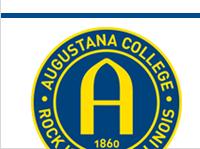Document Type
Published Article
Journal Title
Covenant Quarterly
Volume Number
Aug/Nov 2013
First Page
52
Last Page
72
Version
Publisher PDF: the final published version of the article, with professional formatting and typesetting
Publication Date
2013
Disciplines
History of Christianity | Religious Thought, Theology and Philosophy of Religion | Scandinavian Studies
Description, Abstract, or Artist's Statement
In the Scandinavian Lutheran world in the 1800s, and especially among the Pietists, allegory was a mainstay in preaching and reading strategies. For Pietists interested in applying faith to their lives, there was an added subjective intensity to interpreting allegories. It is entirely natural that when debates arose in the 1860s over defining the nature and limits of the congregation, the revival preacher, Paul Peter Waldenström (1838-1917) resorted to writing an allegory. The result was one of the most widely read novels in nineteenth-century Sweden. Waldenström’s novel, Squire Adamsson: Or Where Do You Live?, initially appeared in late 1862 as a series in the newspaper The Stockholm City Missionary. Today this is an excellent resource for understanding the role of allegory in the lives of Lutheran Pietists generally, as well as for understanding the ecclesiology and devotional piety within the Swedish Mission Covenant (The Evangelical Covenant Church). The novel helped launch the 24-year-old Waldenström into prominence in the spiritual awakening within the Church of Sweden. The themes of the novel were an articulation of the theology of one group of dissenters in the Lutheran state church, the so-called “new evangelical” school (nyevangelismen) surrounding Carl Olof Rosenius (1816-1868). There are a variety of themes that can be drawn out of this text, including a unique presentation of congregational life, Pietist conventicles, and mission meetings from the 1840s-1870s. The main characters, Squire Adamsson and Mother Simple, discuss hard life questions, including the dilemmas that congregations faced in determining where to draw the lines between acceptable and unacceptable behavior, membership and exclusion, assurance and reprimand. This article explores Waldenström’s vision for congregational life as symbolized in Squire Adamsson. It identifies a strong narrative of inclusivity, contextualizes this within Waldenström’s career and writing, and traces the afterlife of this novel within the history of the Evangelical Covenant Church.
Original Citation
Mark Safstrom. “Making Room for the Lost: Congregational Inclusivity in Waldenström’s Squire Adamsson” in The Covenant Quarterly. Aug/Nov 2013. 52-72.
Augustana Digital Commons Citation
Safstrom, Mark. "Making Room for the Lost: Congregational Inclusivity in Waldenström’s Squire Adamsson" (2013). Scandinavian Studies: Faculty Scholarship & Creative Works.
https://digitalcommons.augustana.edu/scanfaculty/2
Included in
History of Christianity Commons, Religious Thought, Theology and Philosophy of Religion Commons, Scandinavian Studies Commons
